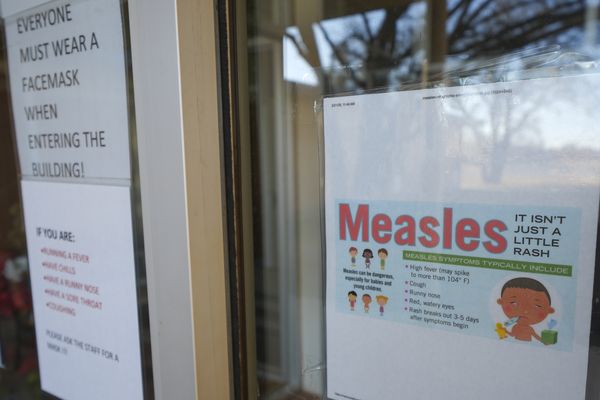
For the last time, Tokyo's Harumi Passenger Ship Terminal, with its impressive white latticed pyramid roof, closed its doors Sunday night.
After 30 years, the aging facility in Chuo Ward that was once known as Tokyo's "gateway to the sea" will be demolished, with most of its functions taken over by the Tokyo International Cruise Terminal in Koto Ward that opened in 2020.
The Harumi terminal had sometimes been used as a location for TV dramas and as a relaxation space for families and couples on dates. The hope for many people is that the area will remain a place to enjoy the sea even after the terminal's demolition, expected to start this summer.

"It's sad to see the terminal close down because this is a work of great effort, into which we put all our energy," said Tadayoshi Numata, the architect who was in charge of the terminal's design while working in the architectural firm of Minoru Takeyama (1934-2020).
The Harumi terminal opened on May 23, 1991, to commemorate the 50th anniversary of the opening of the Port of Tokyo. The six-story building housed an immigration control area, an observation deck and restaurants.
Initially, more than 100 ships from other parts of Japan or overseas called at Harumi terminal per year. Recently, however, as cruise ships have gotten larger and cannot pass under the Rainbow Bridge, the annual number decreased to 30-40 ships. Amid the pandemic and other factors, from 2020 no cruise ships called at the terminal.
In September 2020, the Tokyo government opened the Tokyo International Cruise Terminal in the Aomi district, before ships arrive at the Rainbow Bridge.
Back around 1988, the Tokyo metropolitan government commissioned Takeyama, who had designed the Shibuya 109 building in the late '70s in Tokyo, to design and construct the cruise terminal. The Tokyo government's aim was to create a facility that could become the face of Tokyo's waterfront and liven up the area around Tokyo Bay.
Takeyama proposed a design based on the image of a house because he thought it should be a place where both people leaving by sea being seen off and those coming back can feel at home. With this image in mind, he designed the building with a pyramid roof.
To bring Takeyama's image into reality, Numata, now 65, and his colleagues spent a year repeatedly revising the floor plan and cross-sectional drawings of each floor until they were satisfied.
Soon after the terminal's opening in 1991, Numata saw the facility from a ship, and he remembers as if it were yesterday how beautiful the white pyramid roof was, set against the blue sky.
"I hope people will remember the terminal when looking at the sea off Harumi," Numata said.
-- 'Home' for sailors
For many sailors whose home port was Harumi Pier, they found a home in that pyramid roof.
Hiroshi Murakami, the 60-year-old managing director of Mitsui O.S.K. Passenger Line and former captain of the cruise ship Nippon Maru, felt a great connection with the terminal.
"When I returned to Harumi, I could see the terminal, Tokyo Tower and nearby buildings," Murakami said. "The view at night was especially great."
When he was a second mate in 1995, Murakami spent about two months aboard the Nippon Maru on a cruise to Hawaii, the Caribbean and Alaska. During the voyage, he was engaged in chart work to determine the ship's position while also in charge of equipment maintenance. He sometimes worked late-night shifts as well. Murakami could not be at ease as he was responsible for the lives of about 300 passengers. When he saw the pyramid roof at the end of the long voyage, he could feel that he had come home safely.
It was also at the Harumi terminal that he returned to port on his first voyage as a captain. When bidding farewell to the passengers as they disembarked, a girl said to Murakami, "Captain, I enjoyed the trip." Her words made him suddenly cry.
"The terminal was a place full of memories for me as a sailor," he said.
The athletes village for the Tokyo Olympic and Paralympic Games that was also in the Harumi district will be converted into condominiums under a plan to create a residential district for more than 10,000 people. After the cruise ship terminal is demolished, the area will eventually be turned into a green space.
"I hope the area will become a town where people can enjoy a walk, feeling the sea breeze at any time and the seaside blends into daily life," Murakami said.
-- Demolition, expansion
According to the Tokyo metropolitan government's Bureau of Port and Harbor, the demolition of the Harumi Passenger Ship Terminal is expected to start around July. On the site of the terminal, a simple terminal with customs and immigration functions will be built to accept small and midsize passenger ships.
The Tokyo International Cruise Terminal has one berth that can handle the large-scale passenger ships currently in use. This will be expanded to two berths. After this expansion, the simple terminal at Harumi will be demolished and turned into a green space.
Read more from The Japan News at https://japannews.yomiuri.co.jp/







